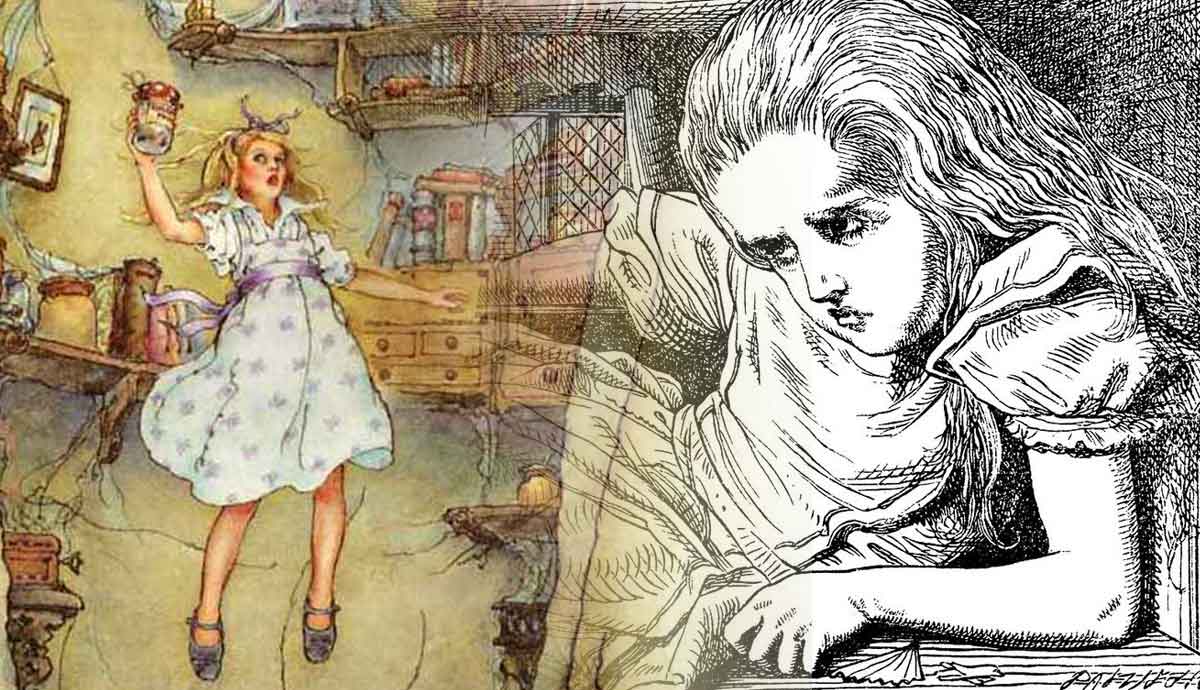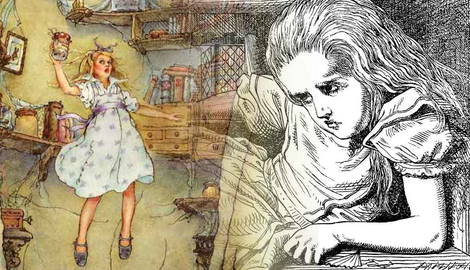
Lewis Carroll’s timeless Victorian classic Alice’s Adventures in Wonderland, first published in 1865, is one of the most popular books of all time, which continues to attract readers young and old today. The book even has a rare neurological disorder named after it – Alice in Wonderland Syndrome, or AIWS, also known as Todd’s syndrome, or Dysmetropsia.
The disorder causes sufferers to experience a range of visual and auditory distortions in response to the world around them, where objects can appear to shrink or grow, and time seems to slow down, mirroring Alice’s surreal experiences in Wonderland. Many experience these symptoms alongside epilepsy or migraines. Some even think Carroll may have experienced some of the symptoms of the malady as a regular migraine sufferer. We take a brief look at the history and symptoms of this rare sensory syndrome.
It was Discovered by British Psychiatrist Dr. John Todd

Alice in Wonderland Syndrome first became recognized and named as a medical phenomenon by the British psychiatrist Dr. John Todd in 1955. He categorized the syndrome by three key symptoms that appear as a series of episodes lasting anything from a few minutes to a whole day: macropsia (objects appearing larger than reality), teleopsia (when they appear farther away), and micropsia (where objects appear smaller than reality). Dr. Todd compared the medical condition to Lewis Carroll’s disorientating novel, noting many similarities between the book and sufferers of the condition.
Diagnosis of Alice in Wonderland Syndrome still remains rare – only around 200 cases have been recognized in medical literature since the 1950s. Over time, however, the syndrome has been linked with a variety of other medical conditions including migraines, epilepsy, strokes and head trauma. In fact, many doctors have compared the syndrome with the unsettling auras that can appear before the full onset of a migraine.
Changes in Bodily Perception

One of the hallmark features of Alice in Wonderland Syndrome is its impact on the perceptual experiences of its sufferers. Among the disorientating effects are changes to the way they perceive themselves in relation to the world around them. For some, their own body parts appear to shrink or swell as if changing in size, while for others it is the room or wider space around them that appears to change, either becoming unnaturally large, or in miniature, like a doll’s house.
It is this particular symptom that has prompted comparisons with Alice, whose body both shrinks and grows throughout the story. Others have reported time or sounds appearing to move faster or slower, or seeing animals that aren’t there, among other symptoms. Some sufferers find carrying a mirror with them can alleviate these experiences by offering a reality check.
Depersonalization/Derealization

The mind-altering experiences brought about by this syndrome can cause sufferers to experience sensations of depersonalization – a detachment from their own body, or derealization – as if the world around them isn’t real. However, despite the surreal sensations experienced by sufferers of Alice in Wonderland Syndrome, there are as yet no connections linking it with hallucinations or issues with eyesight.
Alice in Wonderland Syndrome Is Common in Children

While adults have been diagnosed with Alice in Wonderland Syndrome, it is particularly common amongst children. Many see the symptoms of the syndrome wane as they enter adulthood, while for others it remains a recurring phenomenon that appears in waves or bouts that come and go. For some, what was once a childhood affliction can return many years later. Sufferers whose symptoms are accompanied by epilepsy or migraines sometimes find treating these maladies is enough to alleviate the episodes. However, doctors often play a part in reassuring patients that it is a self-limiting condition that does not always need to be medicated.
Carroll May Have Experienced Similar Symptoms

Given how accurately Lewis Carroll described some of the symptoms of what we now call Alice in Wonderland Syndrome, particularly the sensation of one’s body seeming larger or smaller than it actually is, many have wondered if Carroll had experienced at least some symptoms of the medical condition himself.
Evidence reveals that Carroll consulted with an ophthalmologist in relation to the visual disturbances he experienced during his ongoing migraines, which, as he described in his diaries, were accompanied by a host of other symptoms. In one diary entry, Carroll described, “that odd optical affection of seeing moving fortifications, followed by a headache,” which does suggests a possible connection with the rare medical condition, however, at present this is merely speculation.










